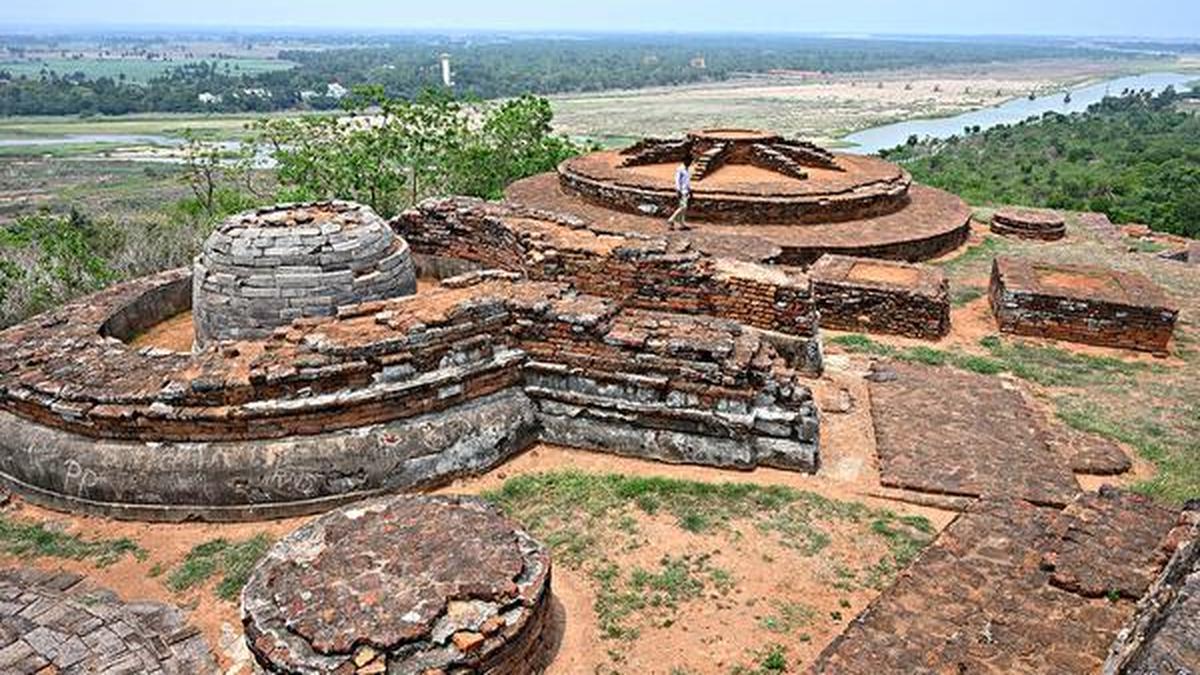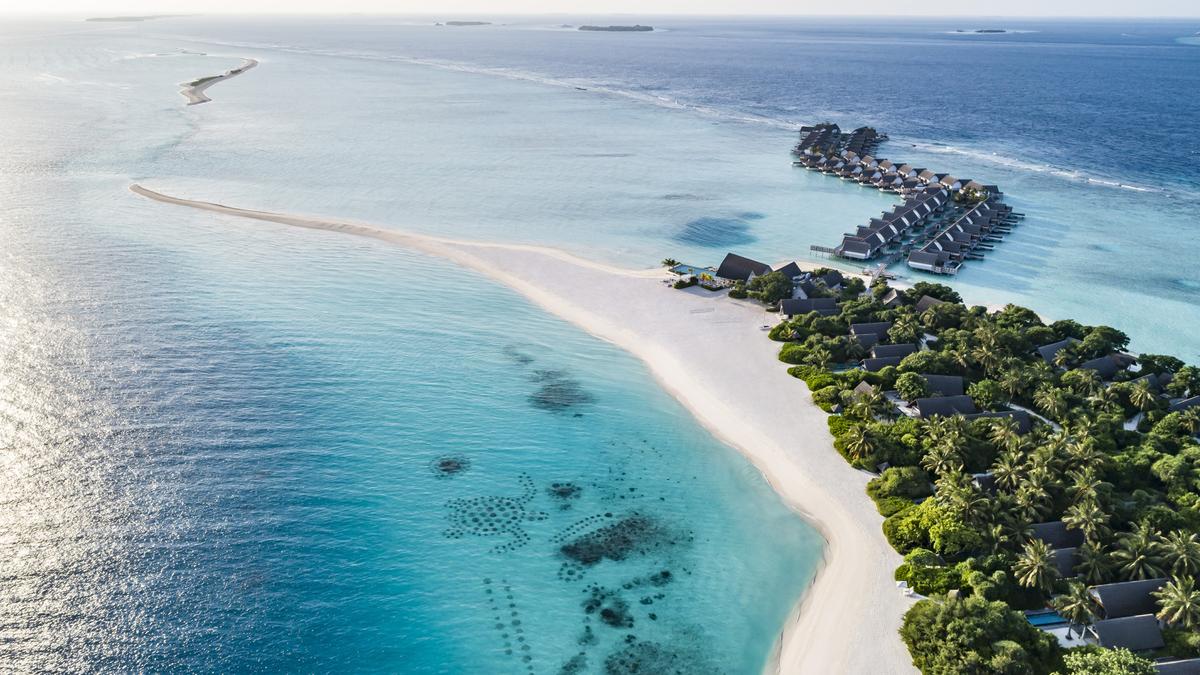The Salihundam Buddhist site located in Gara mandal of Srikakulam. Renovation works are nearing completion.
| Photo Credit: V. Raju
Several historians, academics, writers, and heritage enthusiasts have been working diligently to restore the prominence of Srikakulam’s forgotten ancient history. Despite being regarded as one of the most backward districts in Andhra Pradesh and located in the far northern corner bordering Odisha, Srikakulam is home to numerous prominent Buddhist sites, Neolithic-era caves, and some of the oldest temples in the State. Although it is only 88 km from the city of Visakhapatnam, the district’s prominence and rich heritage remain largely unknown to the world.
This motivated them to highlight the history of Srikakulam, formerly part of the Kalinga region, through books, petitions to the government, and the promotion of temple tourism. Eminent poet, writer, and historian Deerghasi Vijayabhaskar recently published a book titled ‘Veerakalingam’, which emphasises Srikakulam’s significance and its historical connections to neighbouring countries like Sri Lanka, as well as its prominence during the rule of Nanda and Maurya dynasties.

The history of the district can be traced to the period when Nandas ruled the region in 4th century BC. Kalinga region declared independence for itself after Chandragupta Maurya overthrew Nandas in 322 BC. Tracing of pre-Mauryan era, black polished potteries and punch marked coins indicated that Nandas ruled the region for many decades before the beginning of the dominance of Mauryan kings.
Chandragupta’s grandson Ashoka invaded Kalinga in 261 BC and incorporated Kalinga into his extensive empire. The terrible bloodshed in the Kalinga War made Ashoka turn to Buddhism. His decision has laid a strong foundation for Buddhism in and around Srikakulam. Buddhism flourished during the rule of Gupta dynasty king Samudragupta, who subjugated Kalinga in 350 A.D, according to historical documents. Excavations conducted at Salihundam, a Buddhist site, on the banks of Vamsadhara river revealed important Buddhist remains, basements and foundations of apsidal brick chaitya and stupas were excavated.
Although the Buddhist structures got damaged in Dantapuri near Amadalavalasa, Salihundam structure near Gara of Srikakulam Assembly constituency remained largely in good shape, thanks to initiatives taken by the Archaeological Survey of India and the Tourism department.
Writer Gidugu Rama Murthy found this site in 1919 and it has four stupas, relic caskets, sculptures of Buddhist deities Mareechi and Tara. All the remnants were believed to be built between 2nd century BC and 12th century AD. It is believed that Buddhism spread to Sumatra and other far-eastern countries from here.
Indian National Trust of Art and Cultural Heritage (INTACH) convener Nuka Sanyasi Rao and former convener K.V.J. Radha Prasad have urged the government to take steps for the promotion of Buddhist sites particularly at Salihundam and Dantapuri apart from Jainism sites located near Tangamayyakonda and Rottavalasa villages. INTACH also sought the attention of the government for 190-feet long and 80 feet deep neolithic era caves discovered at Nandi hills, Vennalavalasa village of Sarubujjili mandal of united Srikakulam district.
Mr. Vijayabhaskar has requested the government to give wide publicity to Singupuram which had an association with neighbouring Sri Lanka, previously known as Simhala. The then Simhabahudu constructed Hathakeshwara Swamy at Simhapuram village which is now called Singupuram, located on the outskirts of Srikakulam.
“The government needs to order a detailed research into Buddhist sites, Srikakulam’s association with Sri Lanka and Kalingandhra which has a special place in history. The study and documentation would preserve the local history for future generations,” said Mr.Vijayabhaskar.
Senior journalist and writer Bendalam Krishnarao says promotion of Kalingandhra culture and Buddhist sites would enable migrated Srikakulam people to know about their rich history. “I am trying my level best for its promotion through online magazine Nitya. More initiatives are needed to enable new generations to discover the history of their own land,” he added.





